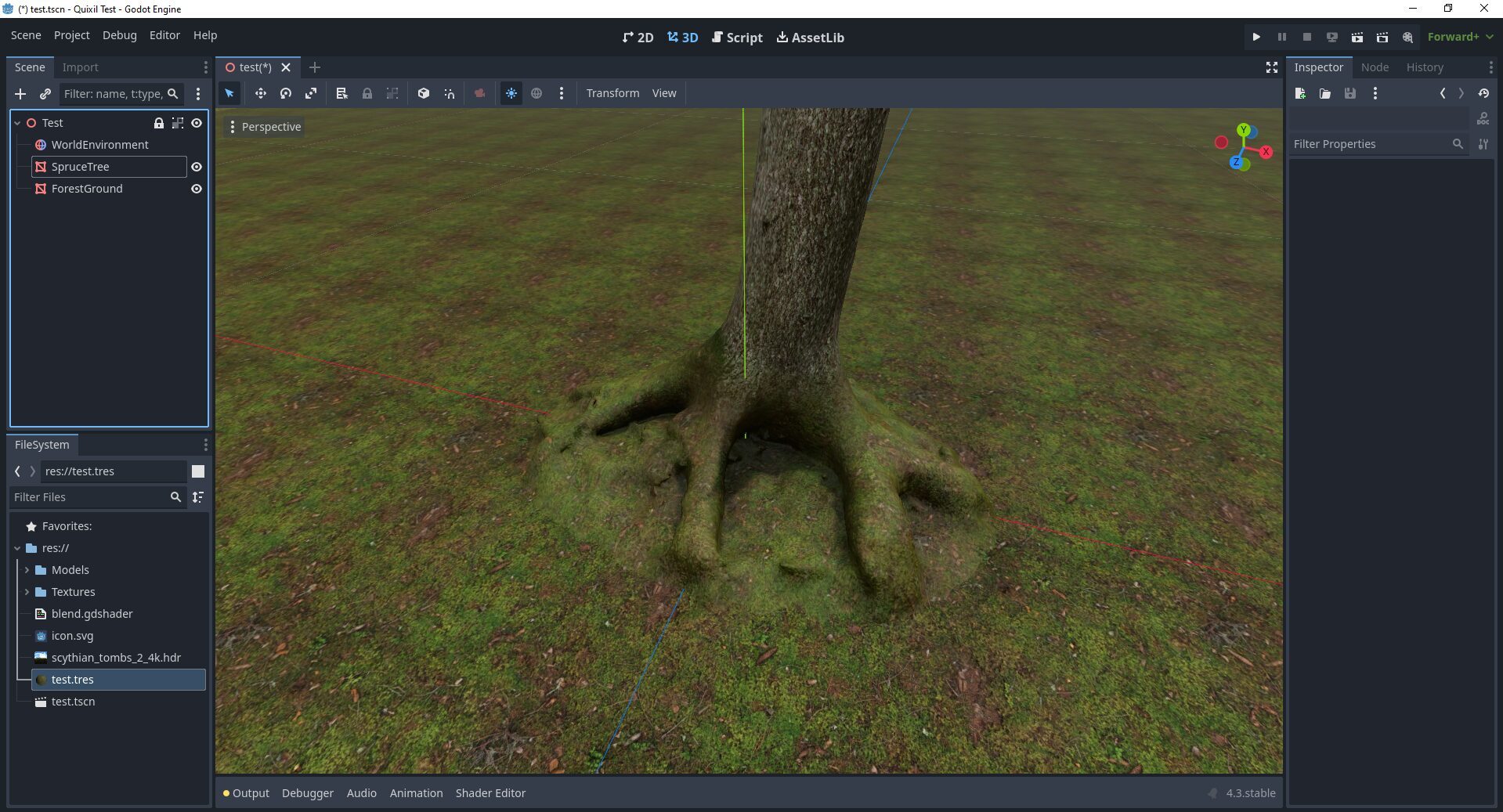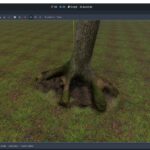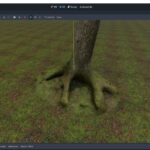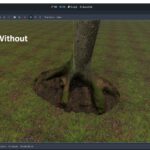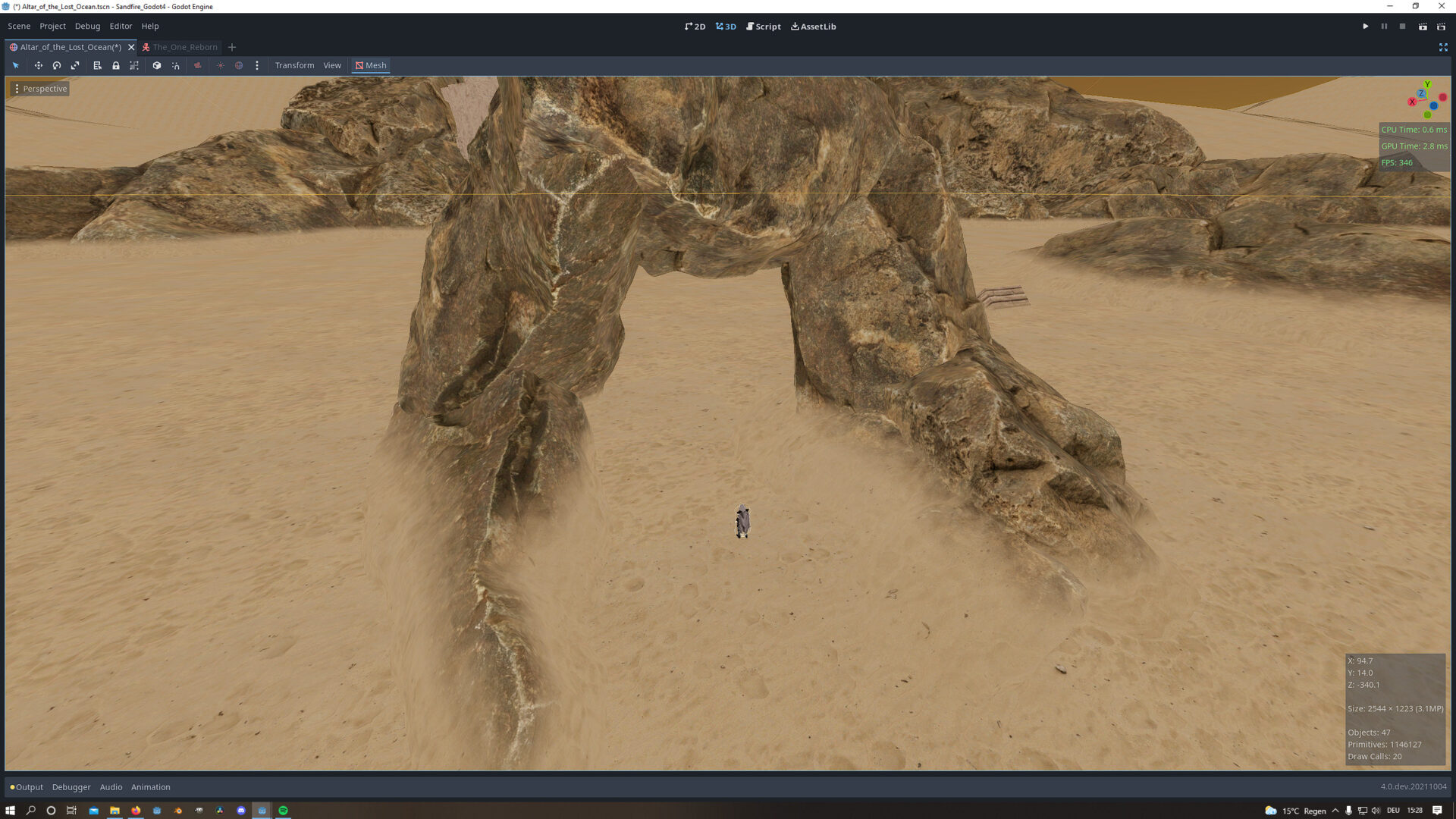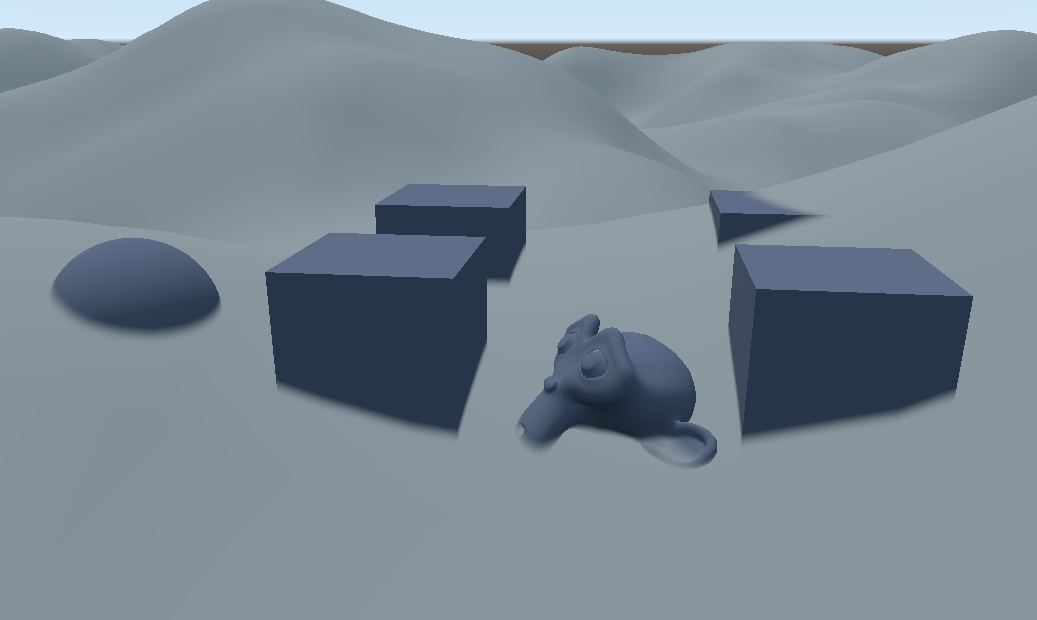Terrain Mesh Blending – Godot 4.3
Steps to setup:
- Setup your ground mesh with triplaner setting on “UV1 -> Triplaner” you can still change it’s scale.
- Add the shader to your mesh that you want to blend with the ground.
- Add the textures for your mesh, and the ground textures for the blend textures.
Original Godot 3 Shader by : Kmitt91
-I have not made this shader, I just updated it to Godot 4.3.
Shader code
shader_type spatial;
uniform vec3 n = vec3(0.0, 1.0, 0.0);
uniform float triplanar_scale = 1.0;
uniform float blend_size = 1.0;
uniform float blend_offset = 0.0;
uniform sampler2D transition_mask;
uniform sampler2D main_albedo : source_color;
uniform sampler2D main_normal : hint_normal;
uniform sampler2D main_roughness : source_color;
uniform sampler2D main_ao: source_color;
uniform sampler2D blend_albedo : source_color;
uniform sampler2D blend_normal : hint_normal;
uniform sampler2D blend_roughness : source_color;
uniform sampler2D blend_ao: source_color;
varying vec3 uv_triplanar_pos;
varying vec3 uv_power_normal;
void vertex(){
TANGENT = vec3(0.0,0.0,-1.0) * abs(NORMAL.x);
TANGENT+= vec3(1.0,0.0,0.0) * abs(NORMAL.y);
TANGENT+= vec3(1.0,0.0,0.0) * abs(NORMAL.z);
TANGENT = normalize(TANGENT);
BINORMAL = vec3(0.0,1.0,0.0) * abs(NORMAL.x);
BINORMAL+= vec3(0.0,0.0,-1.0) * abs(NORMAL.y);
BINORMAL+= vec3(0.0,1.0,0.0) * abs(NORMAL.z);
BINORMAL = normalize(BINORMAL);
uv_power_normal = pow(abs(mat3(MODEL_MATRIX) * NORMAL), vec3(1.0));
uv_triplanar_pos = (MODEL_MATRIX * vec4(VERTEX, 1.0f)).xyz * triplanar_scale;
uv_power_normal /= dot(uv_power_normal, vec3(1.0));
uv_triplanar_pos *= vec3(1.0, -1.0, 1.0);
}
vec4 triplanar_texture(sampler2D p_sampler,vec3 p_triplanar_pos, vec3 p_weights) {
vec4 samp = vec4(0.0);
samp+= texture(p_sampler,p_triplanar_pos.xy) * p_weights.z;
samp+= texture(p_sampler,p_triplanar_pos.xz) * p_weights.y;
samp+= texture(p_sampler,p_triplanar_pos.zy * vec2(-1.0,1.0)) * p_weights.x;
return samp;
}
float overlay(float a, float b){
if(a < 0.5){
return a * b * 2.0;
}else{
return 1.0- 2.0 * (1.0 - a)*(1.0 - b);
}
}
void fragment(){
vec3 p = (INV_VIEW_MATRIX * vec4(VERTEX, 1.0)).xyz;
float dist = dot(p, n);
dist = max(min((dist + blend_offset) * blend_size - 0.5, 1.0), 0.0);
vec4 m_col = texture(main_albedo, UV);
vec3 m_norm = texture(main_normal, UV).rgb;
float m_rough = texture(main_roughness, UV).r;
float m_ao = texture(main_ao, UV).r;
vec4 b_col = triplanar_texture(blend_albedo, uv_triplanar_pos, uv_power_normal);
vec3 b_norm = triplanar_texture(blend_normal, uv_triplanar_pos, uv_power_normal).rgb;
float b_rough = triplanar_texture(blend_roughness, uv_triplanar_pos, uv_power_normal).r;
float b_ao = triplanar_texture(blend_ao, uv_triplanar_pos, uv_power_normal).r;
float blend_mask = texture(transition_mask, UV).r;
float blend = overlay(dist, blend_mask);
ALBEDO = mix(b_col.rgb, m_col.rgb, blend);
NORMAL_MAP = mix(b_norm, m_norm, blend);
ROUGHNESS = mix(b_rough, m_rough, blend);
AO = mix(b_ao, m_ao, blend);
AO_LIGHT_AFFECT = 0.5;
}
